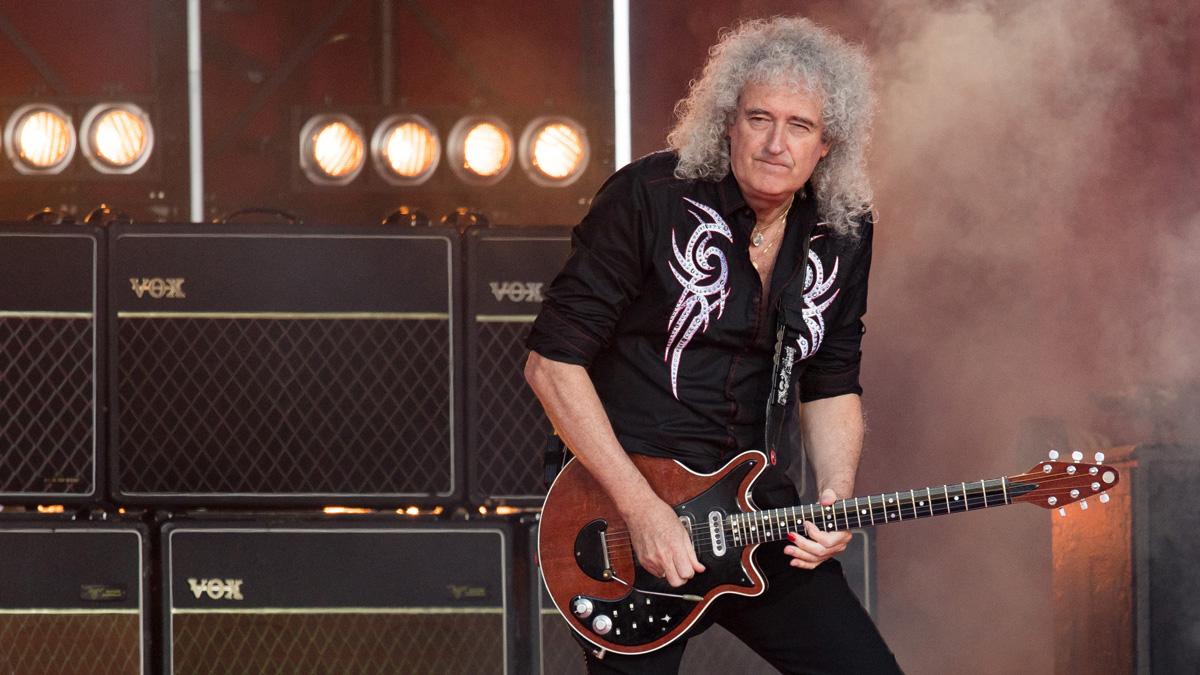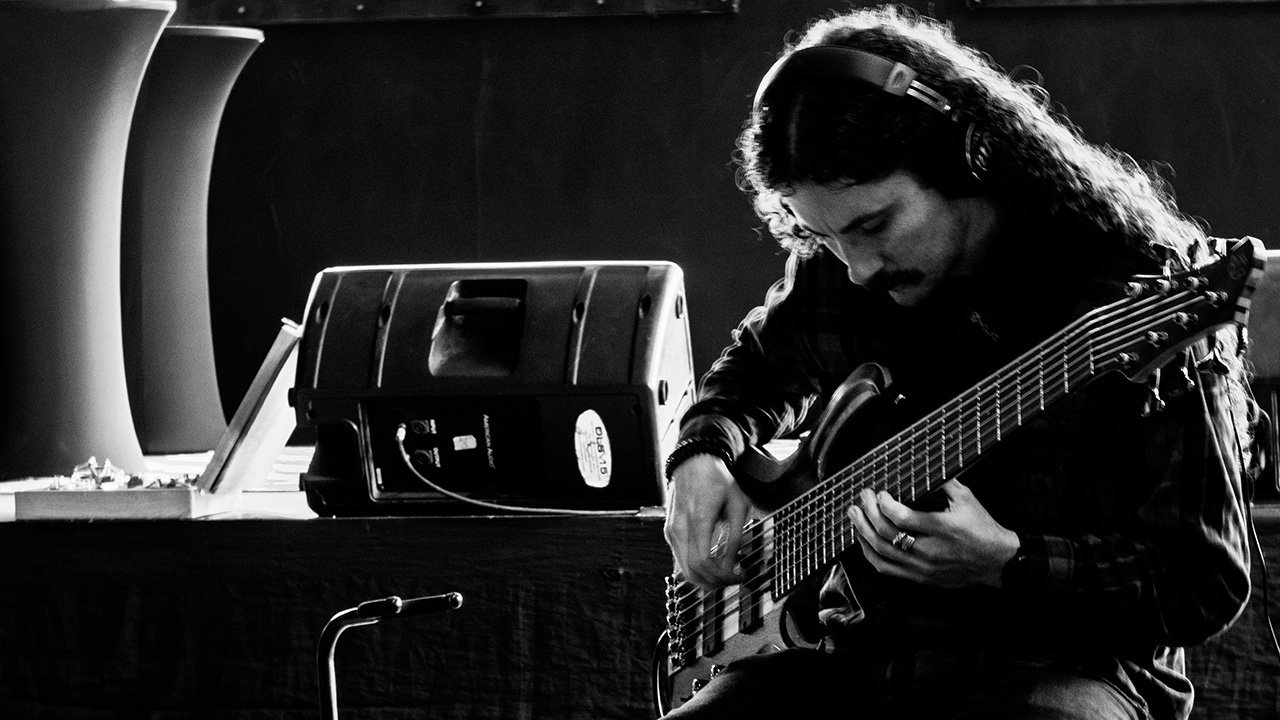The 10 most iconic guitar amps of all time
These tone machines have earned a place in history for being first-rate gamechangers

Like anything else, the concept of what sounds good is purely subjective - it's in the ears of the beholder.
Therefore, it's difficult to declare that one guitar amp sounds - or simply is - better than another. And there are other factors to consider.
Case in point: if your $3,667 vintage British amp weighs 85 lbs, and you're an easily flustered busy gigging musician with a little Subaru and an achy back, guess what: that cheap 20-pound amp in the basement is suddenly better.
That said, it's a lot easier to determine whether or not an amp is classic, or better still, iconic. After all, we've had 70-plus years to listen, learn, put two and two together and decide which amps have a special place in the history of, well, amps.
So we went ahead and put two and two together - and came up with 10. Here, for your reading and listening pleasure, is a list of 10 iconic guitar amps - heads and combos that have earned a place in history for being - in one way or another - first-rate game changers. Enjoy!
- Looking for the best guitar amps you can buy today? We've got you covered
1. Vox AC30 Top Boost

Vox engineer Dick Denney created the AC30 when Hank Marvin, guitarist for Britain’s the Shadows, complained that his 15-watt Vox AC15 couldn’t be heard over the screams of fans when they backed pop sensation Cliff Richard. Vox introduced the 30-watt AC30 in 1958, offering it in 1x12 and 2x12 configurations, and with a single tone control.
In late 1960, the amp was redesigned with three, rather than two, channels, each with two inputs, and offered with an optional Top Boost, or Brilliance, circuit, which introduced an extra gain stage and separate bass and treble controls.
All the latest guitar news, interviews, lessons, reviews, deals and more, direct to your inbox!
The Top Boost feature proved popular enough that it became standard on the AC30/6 (so named for its six inputs). Its chimey high end was a signature of the Beatles’ early recordings and was later favored by guitarists like Brian May, Tom Petty, Peter Buck and The Edge, whose 1964 AC30/6 has been featured on every U2 album.
2. Fender 5E3 Deluxe

Introduced in 1948, the Fender Deluxe was praised for its dynamic, harmonically rich overdrive and compression. It was offered in numerous configurations and designs over the years, but the most desirable model is the 5E3 narrow-panel Deluxe, built from 1955 to 1960 and offered in a tweed-covered cabinet.
The circuit runs at higher voltages than other models and features a split-phase inverter and driver that add a little gritty breakup at the start of the output stage.
Two easily overdriven cathode-bias 6V6 output tubes deliver a sweet, harmonically rich tone, and the 5Y3 tube rectifier has the sag required for dynamics and touch sensitivity. This holy grail of vintage combos has been used by Neil Young, Mike Campbell, Rich Robinson, Mark Knopfler, Billy Gibbons, and countless others.
If you can’t afford the original, more-affordable reproductions are available from Victoria, Kendrick and Clark Amplification, as well as Fender's own '57 Custom Deluxe.
3. Mesa/Boogie Dual Rectifier

From its beginnings in 1970, Mesa/Boogie was beloved for its small-but-powerful Mark series amps; in 1989, however, the company decided to take its game to a new audience. The result was the Rectifier range of bigger and beefier Dual and Triple Rectifier amps. Since then, the Dual Rectifier has become one of the most popular rock amps on the planet.
Designed by Mesa founder Randall Smith, the amp uses silicone diodes that give it a gain level and feeling all its own. The amp proved especially popular with metal and hard-rocking groups such as Living Colour, Metallica, Tool, Korn, Soundgarden and Foo Fighters. In 2009, Mesa revamped the Dual with a third, dedicated clean channel, making the venerable workhorse more versatile than ever.
4. Marshall JCM800

Named using Jim Marshall’s initials and numbers from his car's license plate, the Marshall JCM800 debuted in 1981. With the newly introduced Master Volume feature, the JCM800 allowed for crunchy, sizzling distortion at low output levels, making it the amplifier of choice for heaps of hard rock and metal players, including Slayer’s Kerry King and Jeff Hanneman and Slash of Guns N’ Roses.
The JCM800’s popularity carried on beyond the '80s, becoming a favorite of Fugazi’s Ian MacKaye and Tom Morello of Rage Against the Machine.
5. Marshall 1959 Super Lead 100 Watt Plexi

Played by Jimi Hendrix, Eric Clapton and Pete Townshend - among countless other electric guitar innovators - the 1959 Super Lead helped shape rock and roll as we know it.
Introduced in 1965 (1959 has nothing to do with its year of release), the amplifier included four inputs, two channels, 100 watts of searing power and a Plexiglass faceplate (hence “Plexi”). Matched with 4x12 cabinets, the 1959 Super Lead helped to popularize the Marshall stack.
The amplifier can be famously seen being played by Jimi Hendrix at Woodstock. It’s been highly sought after ever since.
6. Roland JC-120

Producing one of the most popular clean sounds in rock, you’ll rarely see a solid-state amplifier with as much notoriety as the Roland JC-120. The amp was introduced in 1975, offering pure JC clean sound with 120 watts of power and a built-in Dimensional Space Chorus effect.
The JC-120 features dual 12” speakers plus dual power amps that drive the speakers to their full potential for a stunningly clear sound. As a result, the amplifier became a favorite among players like Andy Summers, Robert Smith, Johnny Marr, Jeff “Skunk” Baxter and more.
7. Peavey 5150

Maybe the most well known amplifier released under the Peavey name, the 5150 is the result of a collaboration between Peavey and Eddie Van Halen. Debuting in 1992, the 120-watt, all-tube, two-channel head featured a searing lead channel that helped usher in a new wave of high-gain guitar ferocity in the early '90s.
Since Van Halen and Peavey parted ways in 2004, the model name was changed to the Peavey 6505 and has become an industry standard for modern metal bands such as Chimaira, August Burns Red, All That Remains and others.
8. Fender Twin Reverb

Well, to be more specific, we're talking about Twin Reverbs made between 1965 and 1967. Throughout the decades, these sought-after tone machines have turned up in the rigs of countless guitarists, including Stevie Ray Vaughan - who used a mid-'60s 85-watt blackface model during his 1985 tour of Japan - Steve Howe, Johnny Marr, Jack White and Dweezil Zappa.
The Fender Twin Reverb is considered a standard model for players seeking a clean sound, and it is especially known for the quality of its built-in spring reverb.
James Burton, another famous Twin user, put it best: “If you can plug your guitar into an amp and make it sound good, that’s what it’s all about. The amp I really enjoy playing, especially when I’m traveling, is the Fender ’65 Twin Reverb. It’s got everything you need for live playing and it has great tone.
"That amp just works for me and it’s real trustworthy. When I travel on the road, I do use a little digital delay and maybe a little chorus, but I just like the sound of the guitar and playing something that I think people will appreciate and understand.”
Of course, Fender fans will note that 1965 is the year the company was sold to CBS. Guitar-wise, the sale is still regarded as a turning point - but not in a good way. However, the sale didn't seem to affect the company's amps. In fact, Fender makes a 1965 Twin Reverb reissue today.
9. Fender Bassman

The list of musicians who are (or who have been) in love with their vintage Fender Bassman amps - especially the 4x10 tweed variety made between 1957 and 1960 - is pretty much endless. Just for starters (past and present), there's Eric Clapton, Buddy Guy, Mike Campbell, Mike Bloomfield, Jimmie Vaughan, John Fogerty, Josh Homme, Brian Setzer, the guy up the street from me...
Again, this is just the tip of the iceberg, people. After all, many professional music industry analysts have heralded Fifties 4×10 Bassman amps as the greatest amps - ever.
Fender introduced the Bassman in 1952, and, as its name implies, it was intended for bassists. However, enterprising (and/or bored?) guitarists soon noticed the magical effect the amp had on their guitars and harmonicas. Fender took note and stopped billing the amp as a bass-only model.
As Tom Wheeler writes in The Soul of Tone: Celebrating 60 Years of Fender Amps, "It’s powerful, it’s loud and it’s sensitive to the player’s touch. It sounds great, responding beautifully across the frequency spectrum. It exhibits a sparkling, harmonically rich tone at low and moderate volumes.
"At louder volumes it thickens with a sweet distortion that only seems to get creamier the more it’s cranked. It is particularly well matched to certain popular guitars, especially the Stratocaster."
10. Hiwatt DR103

Sure, Marshall and Vox contributed to the sound of British rock in the '60s and '70s - but let us not forget the mighty Hiwatt DR103. Although it's often associated with the Who's Pete Townshend (who would test their durability night after night), it was a favorite of Pink Floyd's David Gilmour, not to mention the Moody Blues, the Stones and beyond. Although the DR103 looks a bit like a Marshall, it certainly doesn't sound like one. This was the result of a vastly different design.
To quote the super-helpful legendarytones.com, "The Hiwatt DR103 is notably louder and can also run much cleaner than 100-watt Marshalls when needed, and they also have tremendous headroom available. Playing a Hiwatt at a loud volume is, well, an experience."
The site adds, "The Hiwatt DR103 design is based around the use of four EL-34 power tubes and four 12AX7 preamp tubes. The transformers are set up so that the amp can be used with various line voltages around the world and speaker impedance can also be set to 4, 8, or 16 ohms with two speaker outputs wired in parallel."

Damian is Editor-in-Chief of Guitar World magazine. In past lives, he was GW’s managing editor and online managing editor. He's written liner notes for major-label releases, including Stevie Ray Vaughan's 'The Complete Epic Recordings Collection' (Sony Legacy) and has interviewed everyone from Yngwie Malmsteen to Kevin Bacon (with a few memorable Eric Clapton chats thrown into the mix). Damian, a former member of Brooklyn's The Gas House Gorillas, was the sole guitarist in Mister Neutron, a trio that toured the U.S. and released three albums. He now plays in two NYC-area bands.
